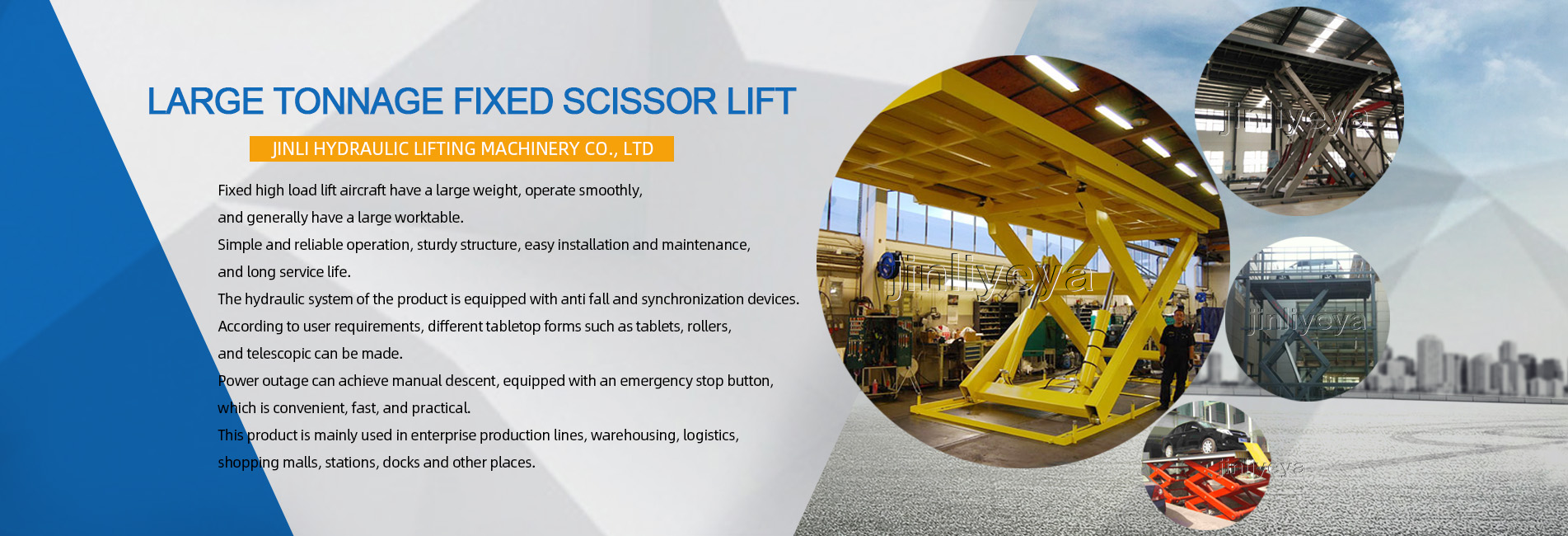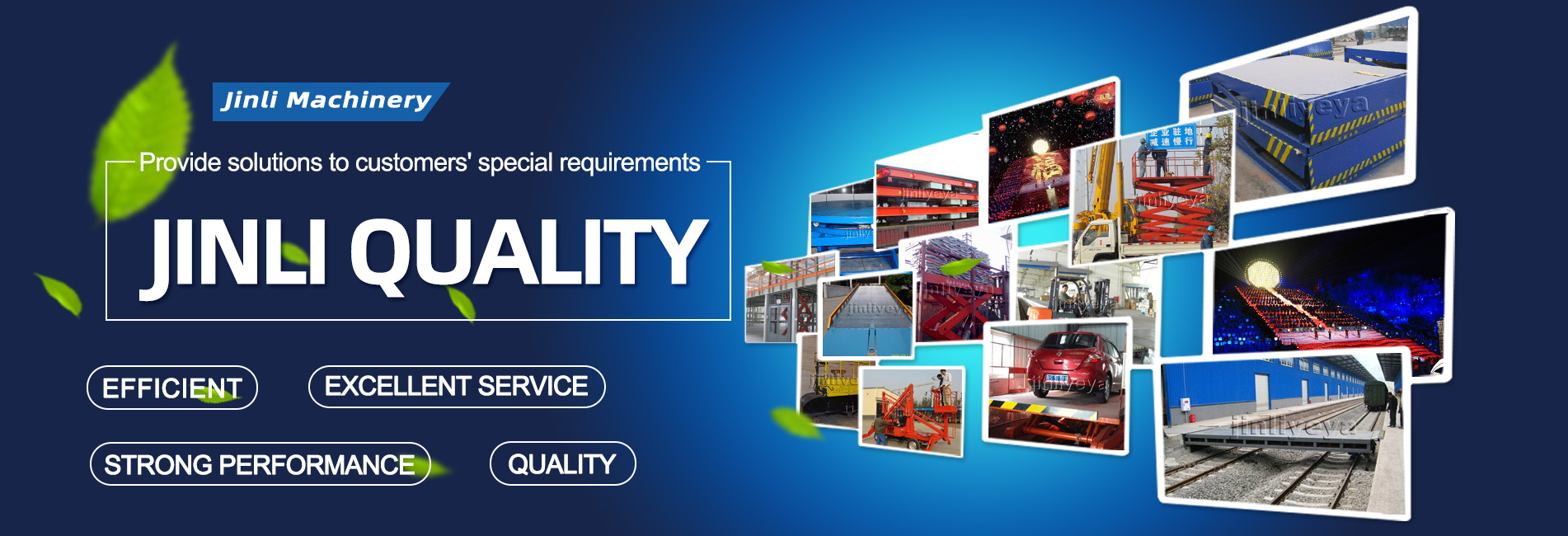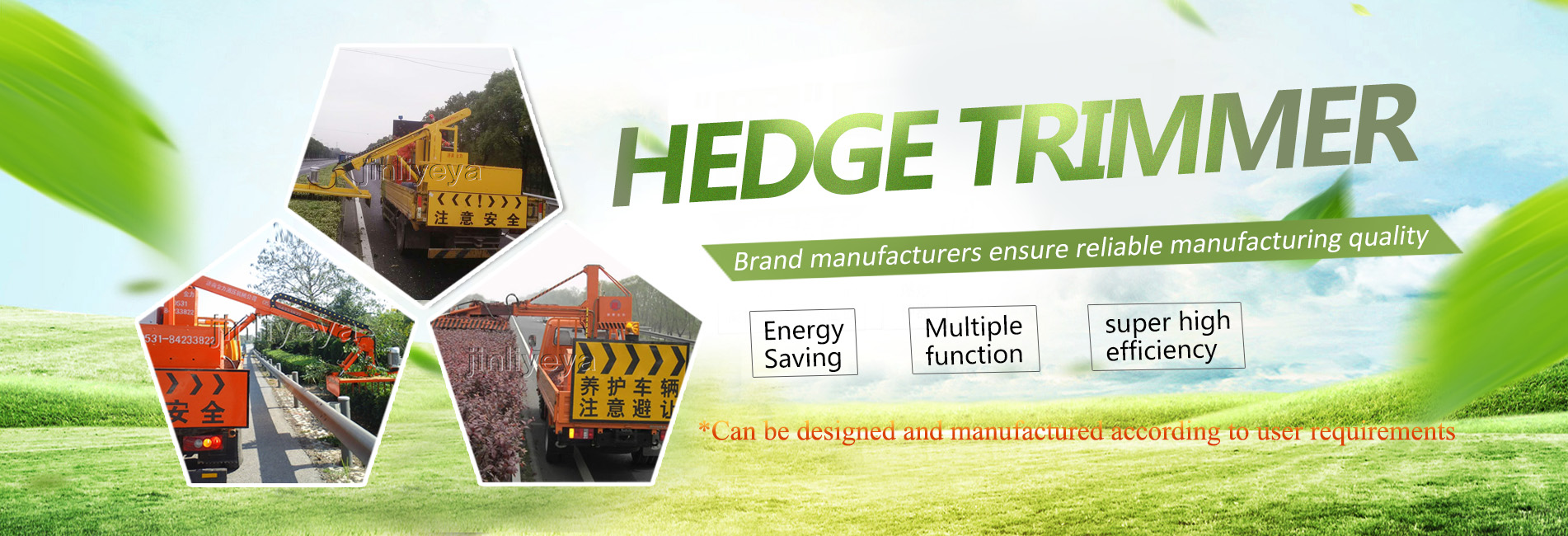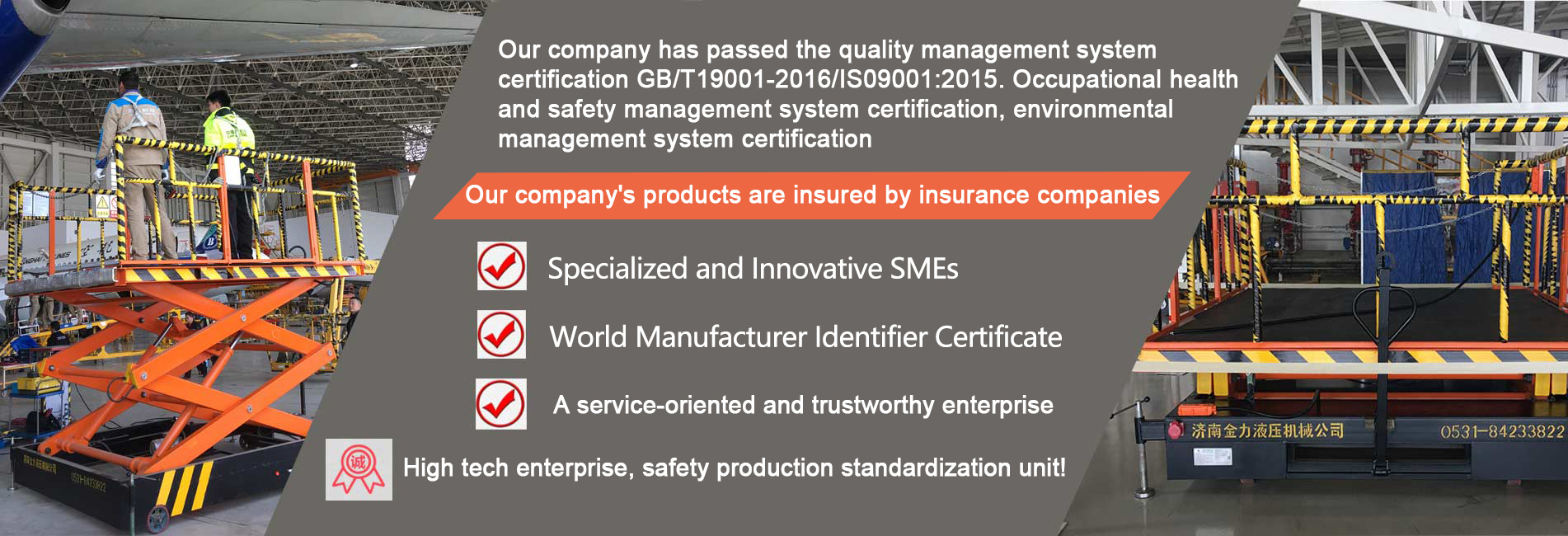The reason for the instability of the hydraulic lifting platform elevator is the composition and principle of the hydraulic transmission system. The hydraulic transmission system of the hydraulic lifting platform is a key component of the hydraulic lifting platform, which is composed of a deep well pump, valve body, speed regulating valve, valve, hydraulic cylinder, hydraulic pipeline, etc.
When the hydraulic lifting platform meets the feeding standard, the magnetic coil is connected to the power supply equipment clamping arm to clamp the cigarette box. If it exceeds the preset value of the pressure controller, the pressure controller sends a signal to slowly raise the cigarette box. After that, a part of the bottom position of the duplex fixture shuttle car is transported to the bottom of the hydraulic lifting platform, and the clamping arm is lowered (descended) to place the cigarette box on the bottom position belt conveyor. At this time, the equipment clamping arm rises to its peak. After that, the duplex fixture shuttle car sends the cigarette box to the front of the next level belt conveyor. The low-level belt conveyor is under the hydraulic lifting platform, and the photoelectric switch sends a signal to raise the hydraulic cylinder to lower the accessories to negative correlation, waiting for the beginning of the next cycle system.
In depth analysis and preventive measures for the unstable lifting speed of hydraulic lifting platforms. After the hydraulic lifting platform is delivered for use, it can exceed the basic element requirements. From the on-site application, it is often found that there are situations such as cigarette packs slipping off, difficult monitoring of the raised part without negative correlation, impact noise during lifting, and hydraulic cylinder oil leakage. After on-site inspection, the key issue was that the lifting speed of the hydraulic cylinder of the elevator was too fast, resulting in an increase in repair rate and seriously endangering the high efficiency of production and manufacturing. The fundamental reason for the unstable lifting speed of hydraulic cylinders in elevators is that the lifting speed of hydraulic cylinders in elevators is also unstable. There are many reasons for this, including design schemes, production, manufacturing, and application.
For common faults in the hydraulic transmission system, the basic theory of speed bending stiffness is applied to analyze in depth the reasons for the unstable lifting speed of the hydraulic cylinder of the elevator (expression: firm and stable; no change):
(1) The circuit composition of the lifting hydraulic press. Gasoline pump speed control valve, hydraulic directional valve, hydraulic directional valve, single side throttle valve (without throttle), hydraulic cylinder lift.
(2) Create an in-depth analysis formula for the speed and stiffness of the lifting circuit. The total flow rate injected into the hydraulic cylinder, that is, the total flow rate passing through the single-sided throttle valve in the formula is the total flow rate passing through the throttle valve; The appearance of the throttle port of the throttle valve and related indices such as the viscosity of the gear oil; AT is the total area of commodity circulation through throttling ports (increasing non throttling); Working pressure at the inlet and outlet of hydraulic oil pump; P1 is the working pressure of the hydraulic cylinder entering the oil chamber, in order to increase the total area of the hydraulic cylinder plunger pump; The index value determined by the shape of the throttle valve determines the speed formula of the variable speed circuit. When the total area of the throttle valve does not change, the output speed of the hydraulic cylinder will change with the change of load. The level of harm caused by the change in load to speed is expressed by the speed bending stiffness T: as the load increases, the output speed of the hydraulic cylinder of the lifting platform's components decreases by negative values; To make the input positive, a negative sign is added to the equation. Substituting it into the hydraulic lifting platform, the larger the speed bending stiffness of the imported throttling variable speed circuit, the higher the stability of the hydraulic press circuit speed (expression: firm and stable; no change).
Based on in-depth analysis, the following are known:
(1) When the load does not change, the smaller the throttle valve inlet, the higher the system software speed bending stiffness; On the contrary, the larger the total opening area of the throttle valve, the lower the intake.
(2) When the load does not change, the speed bending stiffness is good in low gear, and when the load changes, the speed bending stiffness is good when the load is low.
(3) Increasing the interruption of oil supply is likely to lead to accidents, and the working pressure will increase the total effective area of the hydraulic cylinder, which can improve the speed and bending stiffness.
Overall, the key reason for the common malfunction of hydraulic lifting platforms is the unscientific design of the variable speed circuit in the hydraulic transmission system.
{11}







